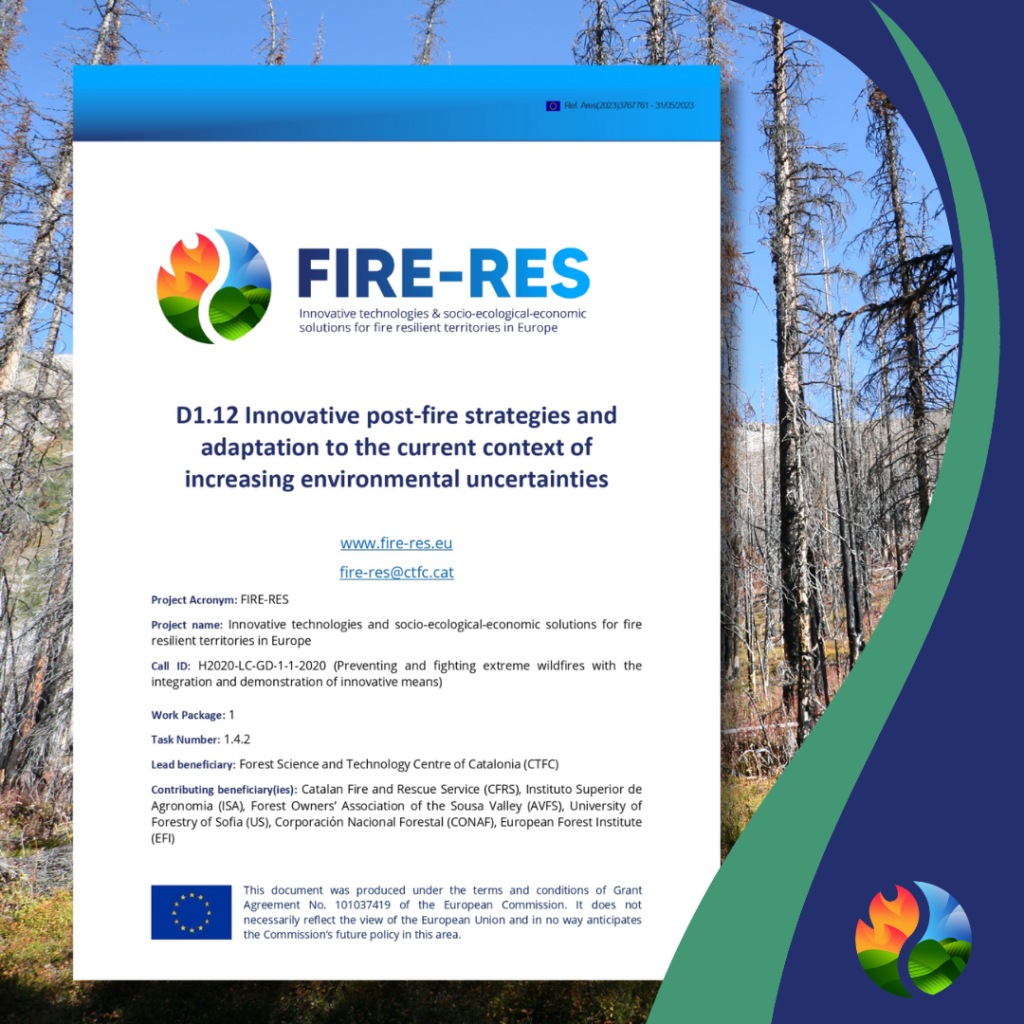
Assessing the ecological resilience of landscapes relies heavily on forests’ ability to respond to and recover from fires. This new FIRE-RES deliverable serves as a foundation for developing science-based criteria and guidelines for post-fire management and restoration. By accurately predicting areas vulnerable to fire before they occur, targeted interventions can be implemented. Similarly, by combining pre-fire thresholds with factors such as fire characteristics, post-fire conditions, competition with pioneer species, and pest outbreaks, vulnerable areas can be identified shortly after a fire. This comprehensive approach ensures more effective and targeted intervention strategies. To gather the necessary information, CTFC condiucted a systematic literature review, along with a questionnaire distributed to experts in the field of forest fires. The literature review encompassed a wide range of forest types and examined the factors, metrics, and associated thresholds influencing post-fire recovery. The questionnaire focused on collecting specialized knowledge regarding the dynamics of vegetation types in boreal, alpine, and continental bioregions after fires, where information is currently lacking.
This investigation reveal that numerous factors influence the recovery of vegetation in fire-prone areas. Previous research has emphasized the significance of pre-fire vegetation characteristics, such as forest composition and structure, in shaping post-fire recovery patterns. Additionally, factors related to the fire regime, including fire severity, frequency, and season, play a significant role. Soil properties, topography, landscape structure, and climatic conditions before and after the fire event also contribute to post-fire vegetation recovery.
Enhancing our understanding of the variables influencing forest resilience to fires is crucial for assessing the ecological resilience of landscapes and for improving post-fire management and restoration. This deliverable is therefore an important step forward for FIRE-RES, as it contributes to our vision of Integrated Fire Management by improving the possibilities for adaptation and restoration of areas affected by fires.
You can asses the full deliverable here and visit our library to browse the other published outcomes.